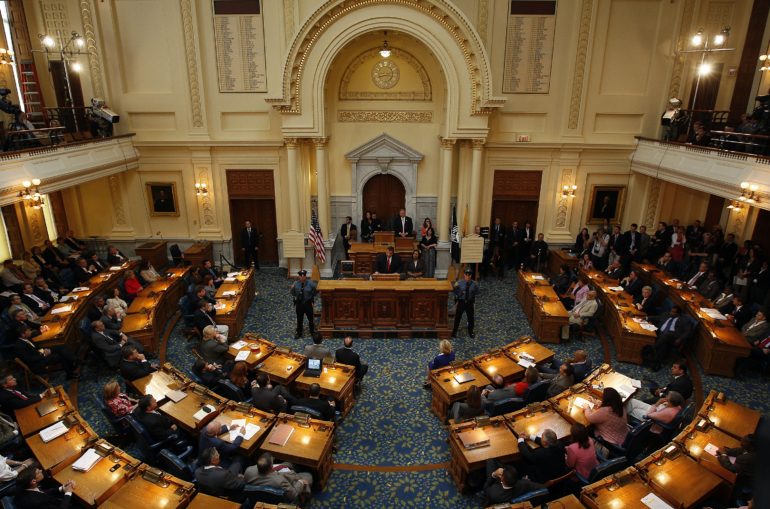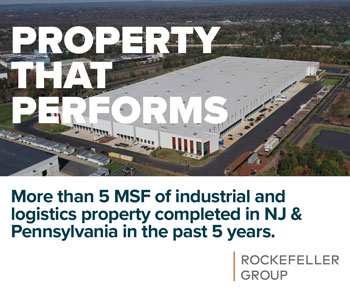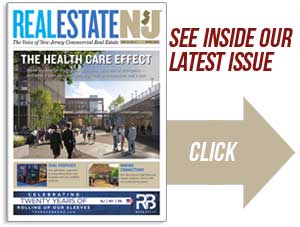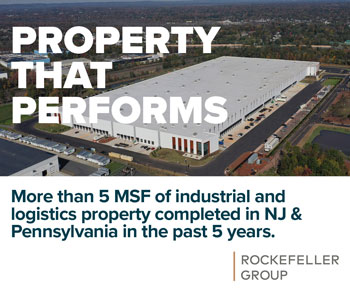By Michael G. McGuinness
Regulations play a critical role in shaping the health, welfare and economies of our society, but they can also be overly burdensome. For proof, look no further than a 2010 Small Business Administration study on the impact of regulatory costs on small firms, which found that government regulations cost companies an added $10,585 per employee annually. I have no doubt that this figure is higher in New Jersey.

As our next governor focuses on making our state more affordable for both businesses and residents, it would make sense to ramp up efforts to cut red tape by eliminating ineffective rules and empowering qualified private-sector professionals to handle more administrative work, technical reviews and project approvals. Expanding the Licensed Site Remediation Professional model to other environmental and land use programs will help speed the pace of community revitalization and economic growth without adversely impacting the environment. Given the dramatic pace of change in today’s digital and globally competitive world, government needs to be nimble and quick to adapt. Failure to do so will drive away jobs and investment.
Technology in state government largely still operates in the Stone Age. One way to address this handicap is to accelerate investment in the use of shared information and “open data” by governments at all levels to improve services, inform local decision-making, promote better regional planning and synergy among towns and better engage businesses and residents. New York City is already moving in this direction. There is no excuse for not providing real-time access and interaction on regulatory matters and other government business among the private and public sectors. Achieving this would be vastly simpler with fewer government entities through municipal consolidation and shared services (as featured in last month’s column).
On the federal side, ambiguity about how the Trump administration will fulfill its promises to dramatically decrease the number of federal regulations is creating uncertainty for the CRE industry.
While the traditional legislative process can be slow and laborious, requiring a president to work with an oftentimes difficult Congress, an administration can also make major policy changes through the president’s unilateral authority to issue executive orders and control regulations issued by federal agencies. Like many presidents before him, Barack Obama used his executive authority to advance key priorities of his agenda, including immigration and climate change. What will the Trump presidency mean for the existing regulatory framework, and what role will it play as the new administration seeks to advance a policy agenda? To help answer this question, it’s worth looking at both the promises of then-candidate and the actions of now-President Donald Trump.
On the campaign trail, Trump pledged to do away with the vast majority of existing regulations, stating, “70 percent of regulations can go — it’s just stopping businesses from growing.” The president’s former chief strategist, Steve Bannon, had also made clear that a top priority over the next four years will be “the deconstruction of the administrative state.” Since taking the oath of office, Trump has moved quickly to fulfill these promises. On day one of his presidency, he ordered agencies to halt any ongoing rulemaking and imposed a moratorium on future regulations.
Two weeks later, he issued an executive order (the so-called “one-in, two-out” rule) mandating that any new regulation be accompanied by the repeal of two existing regulations. The order places additional emphasis on costs and limits the amount of new regulatory costs agencies can impose on individuals and businesses each year. Trump has elevated the role of his “regulatory czar” — the informal title given to the Office of Information and Regulatory Affairs’ administrator tasked with overseeing any rules promulgated by government agencies — to a level far greater than that of past presidencies. While the administration’s broad goals for regulatory reform are clear, the devil, as is so often the case, is in the details.
This point is exemplified by the seemingly straightforward one-in, two-out rule, which has engendered a great deal of uncertainty. The order doesn’t spell out what constitutes a “regulation” or whether independent agencies like the Environmental Protection Agency would be covered. It also fails to clearly define the term “costs,” granting agency heads vast leeway in determining the financial burden of new regulations on taxpayers. Its vague exemption for national security regulations is described as a potential loophole. In addition, the scope of the order is limited because it does not supersede laws that require agencies to issue new rules (e.g., the Dodd-Frank Act requires that certain figures and thresholds be adjusted for inflation every five years, which is done by issuing new regulations).
What impact will all of this have on commercial real estate? Many of these critiques might seem like nitpicking, but they introduce a new layer of uncertainty regarding existing and future regulations on key issues. The Waters of the U.S. (WOTUS) rule is a controversial regulation that would have expanded federal jurisdiction over certain types of waters. In November 2014, NAIOP submitted comments expressing concerns with the proposed rule, which had been held up in the courts. In March 2017, President Trump took a step to roll back WOTUS when he ordered the EPA administrator to formally review it. Will the EPA seek to modify the rule and narrow its scope or repeal it altogether? Under the one-in, two-out regime, would either outcome require the repeal of additional existing regulations? If a new WOTUS rule is introduced, how will its cost be calculated? This unpredictability extends beyond environmental regulations to other areas relevant to CRE, from banking and finance to infrastructure. For developers looking to invest and expand, the shifting regulatory landscape does little to instill confidence.
Going forward, it is clear that a priority of this administration will be to pull back on the reins of the regulatory state and take a more hands-off approach to the economy. How the president goes about achieving that goal remains to be seen. This will be an important concern for commercial real estate for the next four years and beyond.
(Much of the information above first appeared in an article titled “A Regulatory Framework for a New Administration” published by NAIOP’s Development magazine in the Summer 2017 issue and was borrowed with permission.)
Michael McGuinness is CEO of NAIOP New Jersey and has guided the commercial real estate development association’s progress since he joined the staff in 1997. In addition to overseeing daily operations, programs and staff, McGuinness directs the chapter’s legislative activities and manages the Developers Political Action Committee (DPAC).










